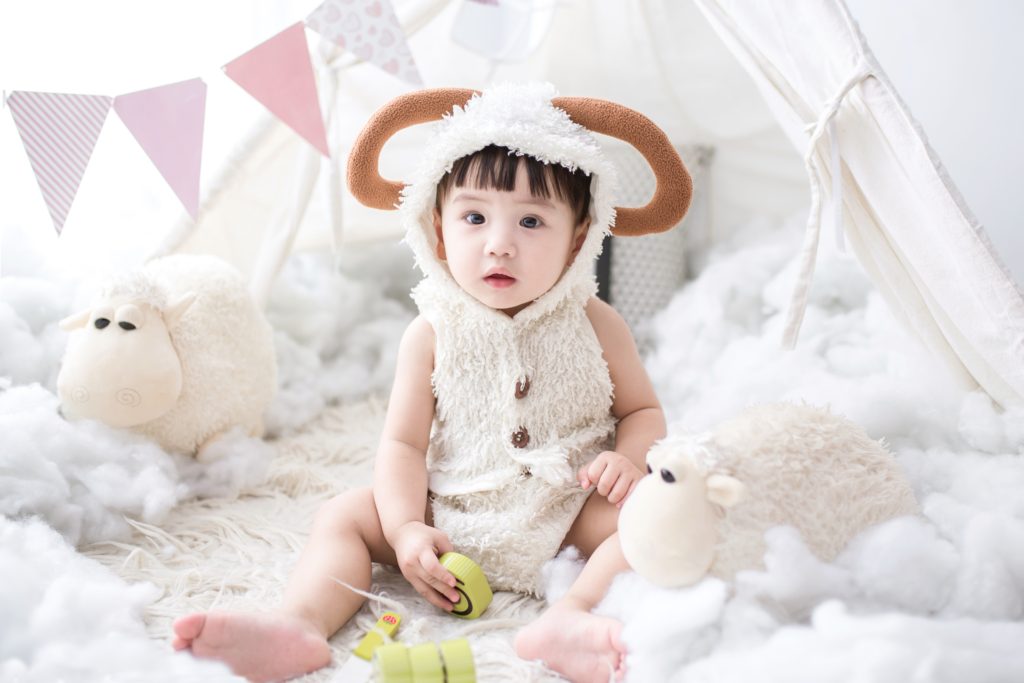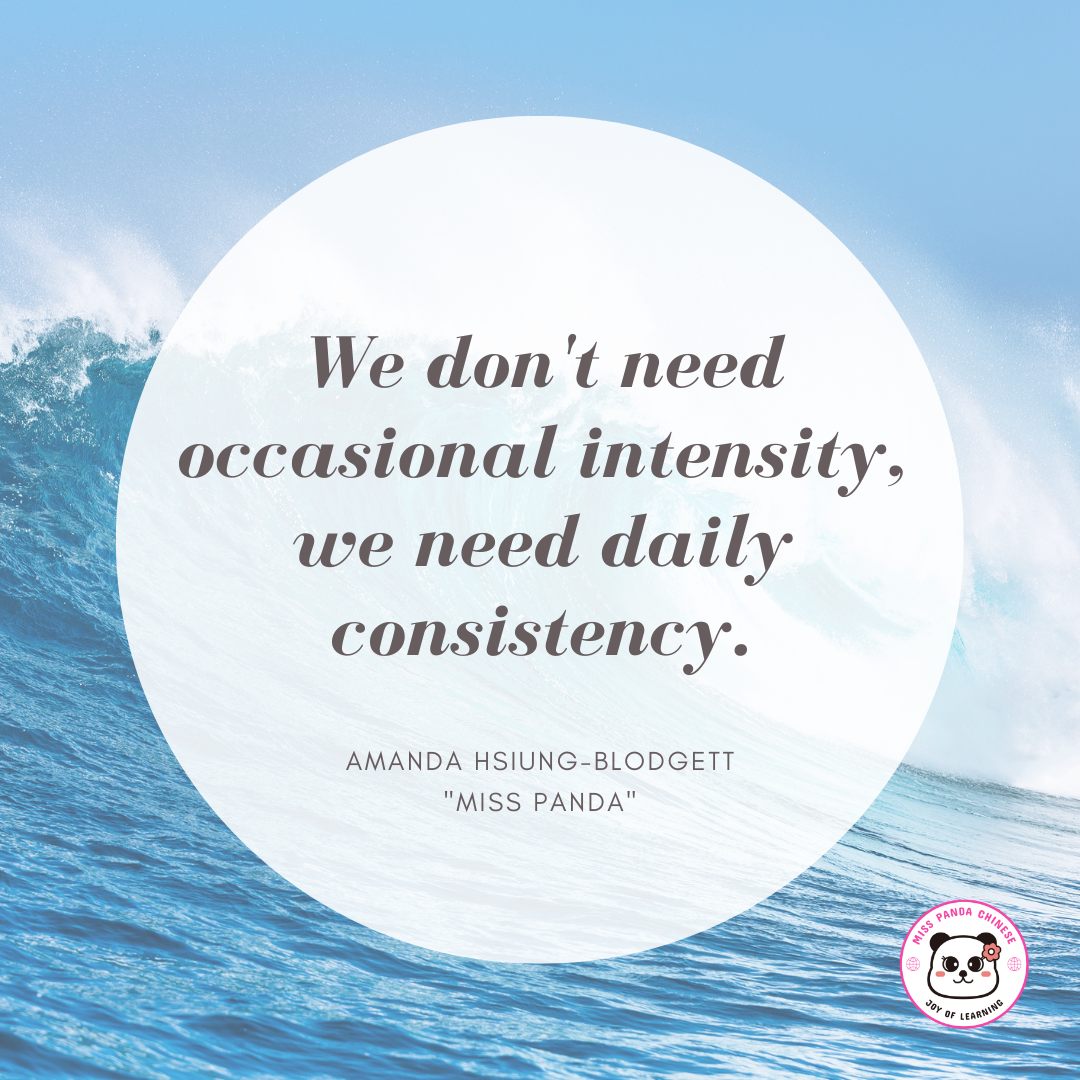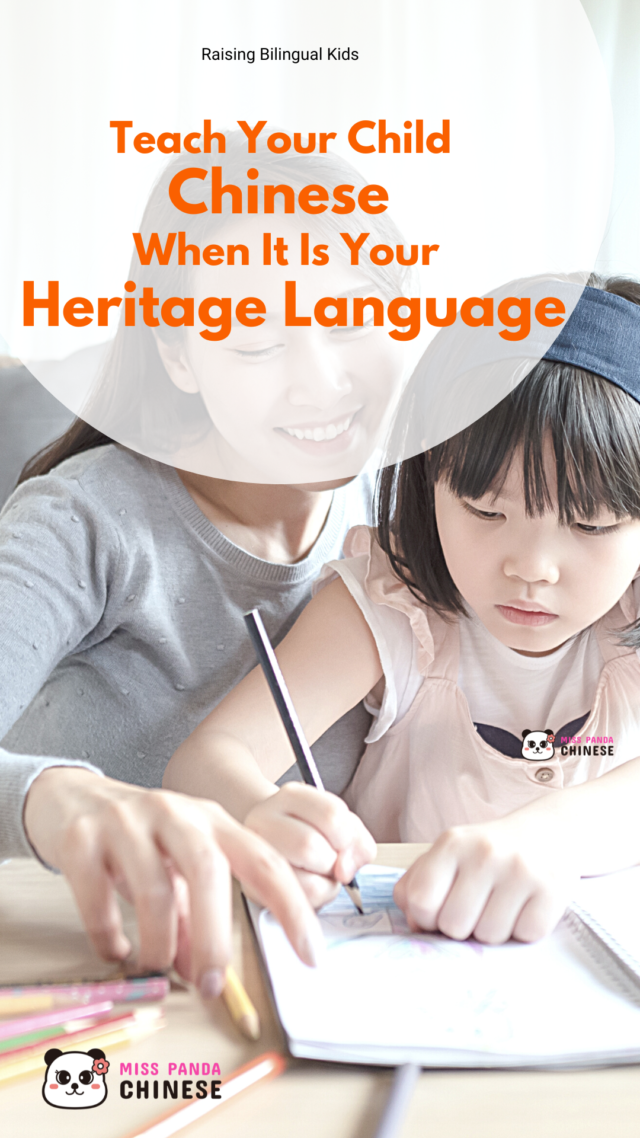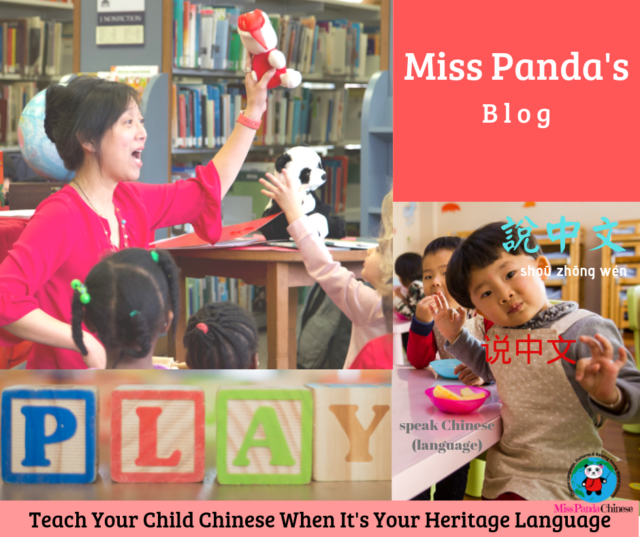Teaching Your Child Chinese As Your Heritage Language
There are different language and culture proficiency levels when we talk about Chinese as your heritage language.
… In the United States, languages other than English are often thought of and referred to as “foreign” languages. However, many people who live in the United States have cultural connections to and know languages other than English. These languages are not “foreign” to particular individuals or communities; instead, they are familiar in a variety of ways. Some people may be able to speak, read, and write the language; others may only speak or understand when spoken to. Some may not understand the language but are part of a family or community where the language is spoken. The term “heritage” language can be used to describe any of these connections between a non-dominant language and a person, a family, or a community.
-Ann Kelleher, University of California Davis | Heritage Languages in America
You may grow up with the Chinese culture…
but not speak Chinese, or speak limited Chinese.
speak and understand some Chinese.
or be able to speak, read, and write Chinese.
I will focus on the former two on the list above for parents who need assistance with the Chinese language.
Does One of These Stories Sound Familiar to You?
Jane came to the States when she was two years old. She grew up in a Chinese-speaking household. Jane gradually left the Chinese language behind as she started school. When her parents talked with her in Chinese she replied in English.
Jane can speak and understand some basic Chinese. Now, she is a mother of two half-Chinese biracial kids and she wants her children to learn Chinese, their heritage language. She is the only one in the family who can speak some Chinese, and she needs some ideas and help to make this possible.
Karen was born and raised in the States. Her mother is a second-generation Chinese American who feels more comfortable speaking English. Karen’s father is a native English speaker. Karen picked up Chinese when her Chinese grandparents lived with the family. However, her grandparents moved away when she was in preschool, and her consistent Chinese input stopped.
Since then, Chinese was no longer a family language, and she moved on with English at home and school. She is now a mother of one child and she is determined to introduce Chinese to her. However, her Chinese mother (grandma to her child) finds it is challenging to communicate with the grandchild in Chinese when she visits. Karen also took her child to a Chinese school, but Karen was not able to keep up with the lessons at home.
I understand how you feel because these are the stories of my friends, cousins, and parents I’ve worked with. Each one of them, including me, has been anxiously making efforts to pass on our heritage language to the next generation.
Passing on the Chinese language and culture to your child seems simple. But, where do you start? Where are you on the journey?
Heritage language acquisition is a journey for parents and kids. It is not a sprint or a crash course for your young child. It is something you build up.
When you practice it every day it adds up. You want your child to be curious about the heritage language and culture. Keep their curiosity growing, so that they always want to come back for more.
Your child does not see the urgency in your mind. She wants to enjoy what is presented to her. Meet your child where they are. Focus on the input – listen, listen, listen; read, read, read!
Examples from 6 Parents on This Journey
Michele Wong McSween is a fourth-generation Chinese American who never learned Chinese. However, she wanted her boys to connect with the Chinese language and culture. Michele has created books to help children, as well as herself, learn Chinese.
Virginia Duan, author of So You Want Your Kid to Learn Chinese shares her own Chinese language operation as a homeschool parent at Mandarin Mama.
Pediatrician and author of Human Body Learning Lab, Betty Choi shares her family’s Chinese language and Korean language learning journey with activities that she shares with her children on her Chalk Academy site.
Educator and author, Yoshito Darmon-Shimamori of The Parents’ Guide to Raising Multi-literate Children wants to pass on his Japanese and French heritage to his two boys. As he walks on this journey he shares great activities in his book and resources on his website.
Grace Lin, an author and illustrator with Taiwanese heritage, shares her cultural heritage in many of her books; now she shares her Asian culture with her daughter in more books.
As I navigate this bilingual family journey with my kids, students, and fellow parents, I’ve created and shared a song and rhyme audio streaming album in an interactive format, Chinese playgroup videos, Chinese Reading Playground videos, podcast, books, and digital playbooks, along with Chinese and world culture resources to connect heritage language/culture and the community/world culture.
Do you see anything in common among the parents I mentioned above?
What I see is the action they take to reach the goal of helping their children to learn their heritage language and culture.
It is a daily dose of Chinese – little by little, day by day, one activity at a time: All adding up, leading to language fluency and proficiency.
Turn challenges into possibilities!
Teaching your kids Mandarin is possible even if you only remember a little or some Chinese. The resources you can find online are infinite. What you need is just to choose a quality one that captures the curiosity of you and your child. Learn with your child together. Start with one of the many resources I shared above created for parents just like you.
Don’t rush.
One song. One short sentence. Repeat. Have fun!
Repeat!
Diversify the activities to keep the curiosity of your child growing. Interests can fade but curiosity can grow.
Add a new song.
Add a new expression.
Use what you learn as much as you can throughout the day. Use them often. Use visuals. Laugh together! Be playful.
Do it again!
What you need is not occasional intensity but daily consistency.
Habits. That is the key to making this work for your family. You need to create a long-term habit for you and your child on this learning journey. Gradually, you will see acquiring and using Mandarin become part of your family lifestyle.
So, what will be your first step towards daily practice?
–
If you are a parent who needs assistance with the Chinese language, you can consider the “Let’s Learn Mandarin Chinese with Miss Panda!” audio streaming album on Spotify and on all major streaming platforms. There is a companion learning guide to this album so you and your child can connect the spoken words with the written language. Hope to see you and your little one in the program!
Related Posts
Teach Your Child Chinese
There Might Be Fear
Be Like Water
Mr. Fool Moves The Mountain
Be Fearless! Pass On Your Heritage Language and Culture To Your Children
photo by Suke Tran
Teach Your Child Chinese When It Is Your Heritage Language.




